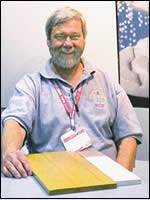The Future of Vinyl Siding Fighting Back with Foam, Fiber Composites, and Even Paint!
Under attack from fiber cement, PVC siding makers are exploring different technologies to shore up their future.
The future of vinyl siding may be more expensive, more wood-like, and painted. That prediction goes against the grain, so to speak, of what have been two of PVC’s main selling points—low cost and paint-free integral color. But under competitive pressure from more wood-like fiber cement siding, vinyl siding extruders are being forced to change their thinking.
The idea of high-end cellular and/or wood-filled PVC siding isn’t new. Such products have been predicted to take over the market for over a decade. In the mid-1990s, premature announcements that foamed siding had arrived were so common that one market study reported it was growing rapidly—though no commercial products were actually to be found.
A number of building-products companies have developed promising cellular and/or wood-filled vinyl siding products, which were installed on test houses, patented and trademarked, and then for some reason (usually production problems or cost) discontinued without ever making a commercial debut. Cellular PVC siding has been successful for years in other regions, notably the U.K., but not here. However, there’s a new sense of urgency about the need for innovation, as big players like Alcoa, Owens Corning, and Louisiana Pacific exit the rigid PVC siding business (see sidebar).
A breakthrough at last?
This year, the first cellular PVC siding appeared commercially in the U.S. It isn’t national news yet, but it’s being watched closely by larger competitors, who have lots more cellular and wood-filled products waiting in the wings.
The point of foamed and/or wood-filled siding is to compete directly with fiber cement on stiffness and low thermal expansion. What fiber cement has over conventional thin vinyl siding is that it’s thick, stiff, and has a clearly embossed “woodier” surface texture and straight “shadow lines” under panels. Conventional PVC siding is typically only 0.040 to 0.050 in. thick and can be as thin as 0.038 in., so it reveals any unevenness in the substrate, which can leave it looking flimsy.
Fiber cement (a mixture of sand, cement, cellulose fibers, and water) was made famous by the so-called “hardiboard” developed in the 1970s and ’80s by James Hardie Industries of Sydney, Australia. It is growing far more rapidly than PVC. From 1999 to 2004, vinyl siding’s market share grew from 32% to 37%, while fiber cement surged from 8% to 16%, according to U.S. Census Bureau statistics on homes selling for $250,000 to $299,000. In 2000, vinyl siding sales actually contracted for the first time.
Something else is different now. Cellular PVC trim boards have become a runaway success, springing from nothing to nearly 10% market share (displacing wood) over the past decade. An internal market study done last year by Cincinnati Extrusion said cellular trim board sales in the U.S. had doubled every 18 to 24 months. In a 2006 study, consulting firm Principia Partners predicted 13% annual growth for trim boards through 2010.
Foamed siding seems like a natural extension of cellular PVC trim. Makers of trim boards already have significant capital investment in rigid PVC foam extrusion equipment and have distribution channels for foamed vinyl building products. “A lot of companies including ours are looking into it,” notes Ralph Bruno, president of Azek Building Products Inc. (formerly Vycom Corp.), Moosic, Pa., the largest maker of foamed trim boards.
The big issue is how to address PVC’s high rate of thermal expansion—about 0.3% to 0.4% for a 50º F temperature change. Foamed PVC trim boards expand too, but they’re aggressively nailed, so expansion reportedly isn’t a problem. Conventional thin vinyl siding is not hard-nailed, but “floated” in wide nail slots to allow movement.
Siding bulks up
If siding is made thicker by foaming, thermal expansion makes overlapping, interlocking, and ventilation much trickier. There are two routes to solve the problem: designing to allow expansion or reformulating to reduce it. Both are being used.
The first high-end cellular PVC siding in North America—also the first factory-painted PVC siding anywhere—was launched last February by NuCedar Mills Inc., a start-up in Chicopee, Mass., that is 51% owned by Jain Irrigation, India’s largest maker of PVC pipe. NuCedar’s Classic Clapboard is floated with a nail hem, even though cellular PVC expands less than conventional thin PVC siding—only about 0.0013% or 0.25 in. for NuCedar’s 16-ft planks.
The 0.5-in.-thick siding is milled out of cellular PVC sheet of around 0.62 g/cc density (made by Jain Irrigation). It interlocks top and bottom with a milled channel. It requires foamed PVC trim boards, milled on the back to the shape of the siding, which give an appearance of butted trim joints but let the siding expand and contract behind the trim. Conventional PVC siding is typically trimmed with a corner piece slotted to allow expansion. NuCedar also mills cellular PVC bead-board siding.
NuCedar’s painted siding is expensive—about $500 a square (100 sq ft), priced slightly less than Western red cedar primed with two coats, the company says. It’s made with proprietary micro-milling technology using special cutters and in-line ripping, milling, parting, coating, and packaging. Classic Clapboard is also unusual for being one course wide, like wood siding.
Applied Composite Technology (ACT) in Lowland, Tenn., hopes to be the second North American company to commercialize cellular PVC siding, and the first to foam wood-plastic composite (WPC) siding. ACT’s product contains 50% wood in PVC, foamed to a density of 0.7 to 0.8 g/cc. It reportedly achieves Class A fire resistance. ACT, which has seven patents on its process and materials, is producing samples for marketing and test installations. ACT also foams 50/50 wood/PP lumber profiles.
ACT bought a 550,000-sq-ft former fiber plant, where it has installed two parallel counter-rotating twin-screw extruders from American Maplan, each with up to 2000 lb/hr output. Managing partner Jim Rock doesn’t consider the huge plant (with three rail sidings and 18 silos) to be oversized for a startup operation—rather, he sees it affording space and electrical capacity to ramp up production fast.
ACT’s foamed siding is 7/16 in. thick vs. 5/16 in. for typical fiber cement. ACT’s WPC boards expand less than conventional PVC siding, so they don’t need a nail hem and can be hard-nailed and butt-trimmed. Like NuCedar, ACT boards are also single planks with milled interlocks.
ACT isn’t the only foamed PVC siding with low expansion. Celutex is another such product, made with the Celuka process by Celuform Ltd. in the U.K. for over 30 years. This material expands only 0.1% over a 30º F temperature range, so it can be nailed or screwed, though it is still normally installed with expansion joints. Celutex siding is 3/8 in. thick, coextruded with an endothermically foamed core (0.5 g/cc density) and a solid PVC cap layer. The newest enhancement is a wood-textured finish, used primarily on mobile homes or as accent trim on apartment buildings. Similar cellular siding is made by two of Celuform’s sister companies in the U.K.
Mitten Inc. in Paris, Ont., a small siding company specializing in R&D and special orders, makes foam-backed and other PVC siding in unusual lengths (up to 40 ft on special order). It is developing a foamed composite siding with flax fiber and mineral filler (0.5 to 0.6 g/cc density) and expects to have it on test houses next year.
Paint is good
Conventional vinyl siding ended up in a hard fight against fiber cement because of some strategic mistakes by siding makers. They competed fiercely among themselves, constantly stripping out cost and making thinner, cheaper products, without realizing that a lot of customers didn’t want thin, cheap siding. PVC siding producers also misjudged the competition from fiber cement, which is itself far from a perfect material. It’s brittle, heavy, and hard to install—requiring gas masks to guard against silicosis—but that doesn’t affect homeowners.
PVC siding companies also misjudged how much consumers would value low maintenance. PVC doesn’t need paint, but fiber cement does (to keep moisture out). That was supposed to be an advantage for PVC, until it turned out that consumers like colors and like to be able to change colors occasionally by repainting.
These lessons weren’t lost on the new contenders with foamed and WPC siding. They partnered closely with major paint companies to develop factory-applied coatings in almost unlimited colors and with long warranties. For example, ACT worked with PPG, which developed proprietary UV-curable exterior paints with 15-yr warranties for the ACT siding. PPG will co-brand the composite siding with ACT.
NuCedar worked with Sherwin-Williams to develop two-part, matte-finish Polane polyurethane paints in 22 standard and 1400 custom colors, including solar-reflective dark colors. These paints are factory-applied by NeCedar. “Color is turning out to be the most important factor in our early success,” says NuCedar president Tom Loper.
Sherwin-Williams also saw an opportunity. Last year it trademarked VinylSafe color technology as the first exterior paints that allow dark colors to be painted over light-colored PVC siding. Previously, dark paint made PVC siding so hot it buckled.
Inhance/Fluoro-Seal Ltd. has developed a combination of two technologies for painting WPC profiles. One is its fluorine-gas surface treatment to promote adhesion. The other is a new low-temperature vacuum coating and UV-curing system from Delle Vedove USA, using new “cold-cure” pulsed UV lamps. They are said to use less than half the energy of conventional UV lamps that are used to cure wood paints. Conventional lamps are also too hot for PVC. The treatment system, called Infin Coating Technology, will be showcased at Principia Partners’ WPC 2007 conference this month in Baltimore.
“The future of vinyl siding is to offer painted colors,” says business development manager Kelly Williams of Inhance/Fluoro-Seal. “Once you go with capstock, you’ve lost the marketing war with fiber cement.”
‘Thin’ siding improves
Makers of conventional “thin” PVC siding have taken cosmetic routes to make their products look more like fiber cement without reformulating or changing their process. They have added more colors of coextruded acrylic cap layers and added new heat-reflecting pigments to allow darker colors. Manufacturers have also designed PVC profiles with deeper panel indentations to make them look thicker and added foam backing for stiffness.
In the late 1990s Crane Performance Siding in Columbus, Ohio, developed the first EPS foam-backed siding, working with Progressive Foam Technologies Inc., Beach City, Ohio. Progressive patented its Fullback EPS panels, which are shaped to be glued behind siding. Other siding producers rapidly followed suit, and today virtually all big siding companies offer some foam-backed products. Progressive Foam makes all the EPS panels and does some adhesive lamination.
Other foams are used too. Alcoa (now part of PlyGem) introduced Structure vinyl siding in 2006, which originally was bonded to extruded PP foam from Dow, but now uses EPS for stiffening. Structure siding comes in a choice of 700 capstock colors.
Royal Building Products, Woodbridge, Ont., (now part of Georgia Gulf) introduced its DuraPlank siding two years ago. It is backed with extruded PE foam from Pactiv for stiffness. The ribbed foam is snap-fitted, not glued, which lets air circulate behind the siding.
Structure and DuraPlank have given PVC siding a new look that mimics the random-board look of wood siding. Both are available in a single 7-in. plank, floated on a nail hem for expansion. (NuCedar’s foam PVC clapboard and the forthcoming ACT foam WPC siding are also single planks.)
Duraplank is also the thickest rigid PVC panel on the market—0.054 in. vs. 0.40 to 0.50 in. for most siding. A double-folded nail hem gives it 265 mph wind resistance, possibly the highest available (only 150 mph wind resistance is required for hurricane-prone Texas and Florida).
Future directions
Cellular PVC siding—with or without wood—is still a very small part of the picture. But the pipeline is loaded with innovative products. “There are all kinds of siding choices,” says Andy Marine, general manager of Aspen Research Corp. (a unit of Andersen Corp.) in White Bear Lake, Minn., which licenses its patented Fibrex wood/PVC material. Aspen is working with licen-sees on several siding designs, including solid, hollow, foamed, capped, two- and three-up panels, and formulations suitable for paint. The historic Andersen house was remodeled five years ago using developmental Fibrex siding.
Traditional vinyl siding companies are also developing foamed and WPC products. Alside, a unit of Associated Materials Inc., Cuyahoga Falls, Ohio, is developing wood/PVC siding, trademarked Revolution. It’s in the trial phase on test houses and could be commercial as early as next year.
Kaycan Ltd. in Pointe Claire, Que., is also making samples of a new foamed PVC siding. Testing a new siding product can take years.
Mergers and acquisitions have put new combinations of technologies and people together to create new products. Azek last January acquired technology for foamed flax/PVC fiber-composite deck profiles from Procell in Foley, Ala. Procell was developing foamed flax/PVC siding before the acquisition.
Alcoa Home Exteriors, Pittsburgh, had been researching foamed WPC siding before it was acquired this year by PlyGem Industries, Inc., Kansas City, Mo., a licensee of Strandex Corp.’s technology for extruding 70% wood fiber in PVC or HDPE profiles. PlyGem is now looking at all three avenues—foam, WPC, and foamed WPC—as well as paint.
Royal Group Technologies acquired Marley Mouldings (now Royal Moulding) in Marion, W. Va., in 2002. Marley had extruded cellular PVC moldings since the 1970s. Royal also has proprietary technology for selective embossing of foamed flat profiles with an acrylic cap layer, which could apply to siding.
CertainTeed Corp., Valley Forge, Pa., also has a foamed siding product under development. The company already makes “Restoration Millwork,” a line of foamed PVC trim boards. CertainTeed also just discontinued a foamed wood/PVC decking called Boardwalk.
Related Content
Put Some ‘Lean’ into Your Profile Extrusion Process
With everyone struggling to find talent, there are ways to reduce operator interaction with the process by applying some lean manufacturing principles.
Read MoreOnline X-Ray Inspection Boosts Extrusion Quality
Höhle uses Sikora’s x-ray measuring systems for inline quality control of extruded microducts.
Read MoreHow to Effectively Reduce Costs with Smart Auxiliaries Technology
As drying, blending and conveying technologies grow more sophisticated, they offer processors great opportunities to reduce cost through better energy efficiency, smaller equipment footprints, reduced scrap and quicker changeovers. Increased throughput and better utilization of primary processing equipment and manpower are the results.
Read MoreFully Automated Extrusion Process Enables Use of Composites for Manufacturing Pressure Tanks
Amtrol was looking for a more cost-effective means to produce thin-wall liners for a new line of pressure tanks. With the help of a team of suppliers, they built one of the world’s most sophisticated extrusion lines.
Read MoreRead Next
Plastics a Carpenter Could Love
Jim Rock has tried to put sawdust into plastics off and on for 20 years, long before wood composites became fashionable.
Read MoreAdvanced Recycling: Beyond Pyrolysis
Consumer-product brand owners increasingly see advanced chemical recycling as a necessary complement to mechanical recycling if they are to meet ambitious goals for a circular economy in the next decade. Dozens of technology providers are developing new technologies to overcome the limitations of existing pyrolysis methods and to commercialize various alternative approaches to chemical recycling of plastics.
Read MoreUnderstanding Melting in Single-Screw Extruders
You can better visualize the melting process by “flipping” the observation point so that the barrel appears to be turning clockwise around a stationary screw.
Read More



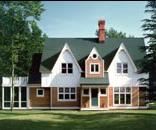

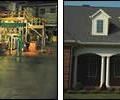

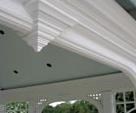

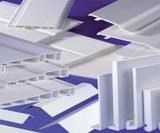













.png;maxWidth=300;quality=90)











